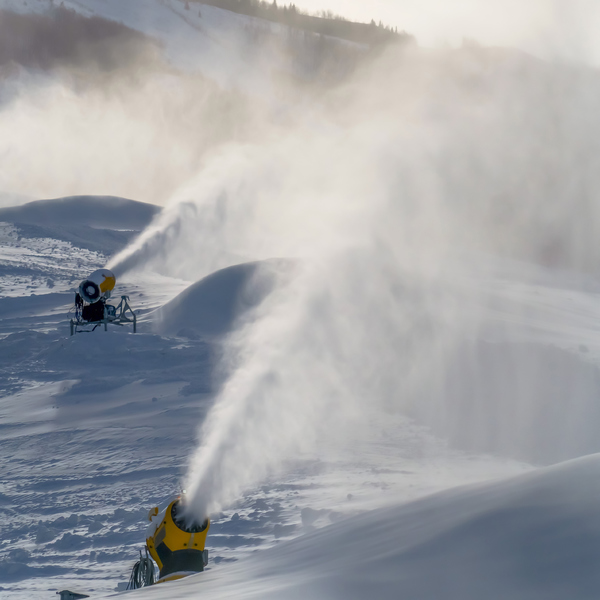Dublin Core
Title
Description
Skiing is big business in Utah! The state’s geography allows for a light, fluffy powder that tends to dump hard on the west side of the mountains. But, warming winter temps and little-to-no snowfall can ruin an entire season of tourism for the slopes. As climate change threatened winter seasons, ski resorts began to look for ways to ensure their slopes would continue to get “the greatest snow on earth.” Fortunately for ski-bums, the adoption of snowmaking technology in the late 20th century allowed Utah resorts to make their own snow – and save their ski season in the process.
Iron County’s Brian Head Resort took their artificial snow production seriously after struggling with unpredictable winter seasons. The small resort opened in 1965, hoping to take advantage of the rising popularity of skiing by developing a winter tourist economy. However, the average snowfall for the region consistently underperformed resorts in northern Utah. Facing warmer winters, the resort decided to invest in snowmaking equipment in the early 1990s.
Artificial snow is made by combining water and compressed air, which is then sprayed out of a tube called a snow gun. One cubic meter of human-made snow requires over a hundred gallons of water. Imagine how many thousands of gallons are required for just one slope of snow! The thick layer of fake snow is no match for a natural fluffy powder, but snow from a cannon is more predictable. Snowmaking ensures a reliable beginning to the tourist season and more money for the resort towns.
Brian Head wasn’t Utah’s only resort to embrace artificial snow. By 1990, Park City had a snow-making system capable of covering 400 acres, making fake snow essential to the success of their ski season. As climate change threatens the future of Utah winters, some experts are questioning the toll that fake snow takes on the environment – namely water use during drought years. Regardless, the demand remains, and resorts continue to invest heavily in snow guns and other equipment to supplement nature’s bounty. With more fake snow on the slopes each year, does Utah still have “the greatest snow on earth”?
Creator
Source
_______________
See Janet Burton Seegmiller, A History of Iron County, Salt Lake City: Utah State Historical Society, 1998; “Brian Head,” Utah History To Go; “Origins of Brian Head Resort,” Brian Head Resort; “History of Brian Head,” Brian Head Town; “Fake Snow Could Cause Real Trouble,” The Utah Statesman, September 21, 2005; Brennan Lagasse, “The Problem with Fake Snow,” Powder, April 11, 2016; Frederick Reimers, “The Complicated Ethics of Creating Fake Snow,” Deseret News, November 21, 2021; Tom Harris, “How Snow Makers Work: Costs of Snow-Making,” HowStuffWorks, February 2, 2021; Gordy Megroz, “How Ski Resorts Make All That Artificial Snow,” Men's Journal; David Hampshire, Martha Sonntag Bradley, and Ellen Roberts, A History of Summit County, (Salt Lake City: Utah State Historical Society, 1998); Catherine Marina Pickering and Ralf C. Buckley, “Climate Response by the Ski Industry: The Shortcomings of Snowmaking for Australian Resorts,” Ambio 39, no. 5/6 (2010), pp. 430-438.

